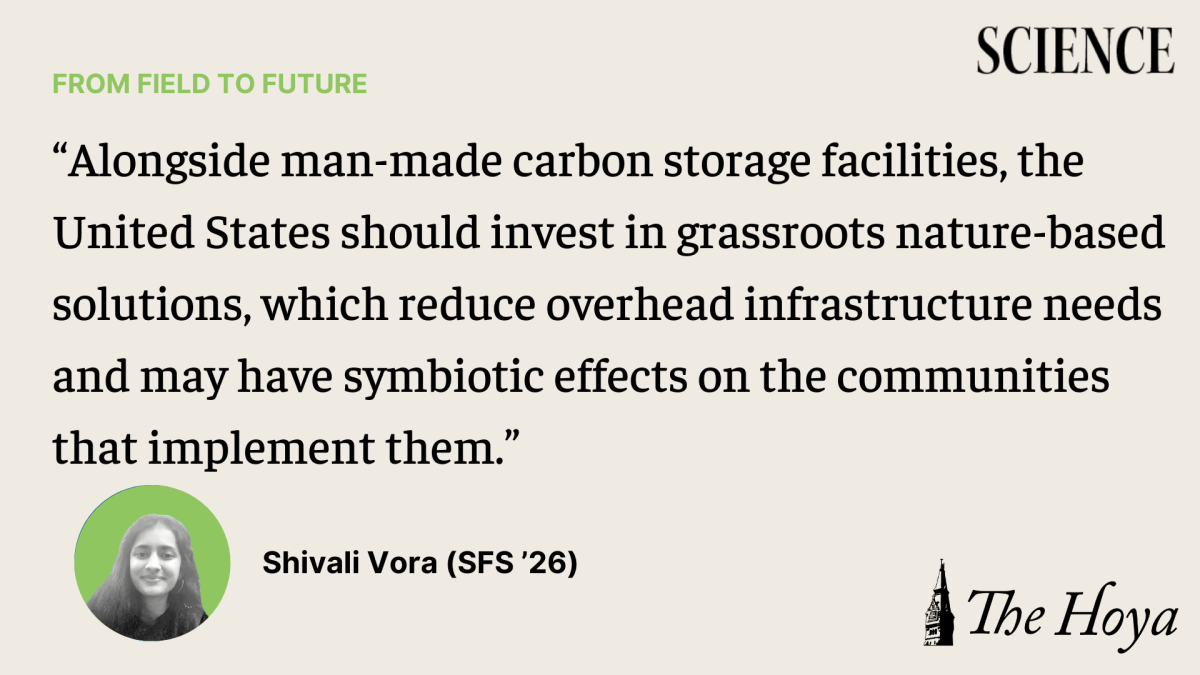For the first time on record, global warming has surpassed 1.5 degrees Celsius in one year, pushing Earth’s life to its adaptive limits. From raging wildfires to rising seas, what was once on the distant horizon has come unsettlingly close. Decarbonization, the process of either preventing greenhouse gas emissions or absorbing the excess, is urgently needed to combat the trend, as carbon dioxide is responsible for about two-thirds of all human-produced heating influence.
Unfortunately, decarbonization has become increasingly challenging as geopolitical conflicts raise energy prices and compromise nations’ green commitments. While approaches like carbon taxation and clean energy development face political controversy, affordability issues and other hurdles, carbon capture and storage (CCS) is emerging as a more attainable method of reducing atmospheric carbon before it has a chance to contribute to global warming.
CCS, the sequestration of carbon on or below the ground, is most practical at sites of mass greenhouse gas emissions, like power plants and factories. It involves chemically extracting carbon dioxide at the point of emission, then transporting it in compressed form via road, ship or pipeline to geological formations for injection and permanent storage. These sites, which must be at least a kilometer below the surface of the earth, include saline aquifers, depleted oil and gas reservoirs and rock formations.
Another destination for captured carbon is reusing it in synthetic fuels, plastics and algae-based intermediates for organic products, such as fertilizers and animal feeds. With sufficient demand for these products, CCS could become a more viable technique for regions where land is not available or geologically suitable for storage.
The major roadblock to this type of carbon capture, however, is how resource-intensive it is. From transportation costs to concerns about the long-term effects of increased underground pressure, human-mediated carbon capture is innovative, but not ideal. Fortunately, nature has a few capturing mechanisms of its own that only need our support. One of the most promising is the mangrove tree.
Mangroves are native to coastal tropical and subtropical regions, especially the intermittently flooded intertidal zone. They are notably resilient against saltwater and low-oxygen environments, prevent soil erosion, shelter young marine animals and absorb the brunt of natural disasters at the shoreline, among many other ecosystem roles.
Mangrove forests have the unique ability to store up to four times more carbon than other tropical forests, like the Amazon rainforest. They are known as blue carbon habitats, where slower microbial decomposition due to the presence of water (and thus slower carbon release) increases their potency as carbon sinks relative to land-based sinks. When mangroves die, their carbon is further sequestered underwater in a process known as carbon burial, at rates 20 times higher than terrestrial forests. Their importance for carbon storage is reflected in the fact that 122 million tons of carbon were released into the atmosphere from 2000 to 2015 due to mangrove forest loss.
Despite their many proven merits, over the past few decades, mangrove forests have suffered from higher rates of deforestation than rainforests. Thus, efforts to conserve, manage and restore them have emerged as a key focus for ecosystem-based adaptation, a strategy that relies on nature-based solutions for climate change. Nonprofits like the World Wildlife Fund have been undertaking mangrove protection and replanting efforts in equatorial and island nations like Colombia and Fiji. The rippling impacts are remarkable; in eastern India, for example, a government-subsidized workforce employing primarily rural women has been replanting mangroves that are estimated to capture 102 million tons of carbon per year.
Here in the United States, the government has slowly but surely caught on to CCS. In 2023, the Department of Energy allocated $45 million in funding to advance carbon capture technology and infrastructure. Concurrently, the White House Council on Environmental Quality established two new task forces for carbon capture in accordance with the Utilizing Significant Emissions with Innovative Technologies (USE IT) Act.
Alongside man-made carbon storage facilities, the United States should invest in grassroots nature-based solutions, which reduce overhead infrastructure needs and may have symbiotic effects on the communities that implement them. Mangrove swamps are ubiquitous in the Everglades of South Florida, but face risks from saltwater intrusion and human activity, particularly drainage for aquaculture and industrial development. Mobilizing the surrounding communities to help alleviate these threats, restoring freshwater flow to mangroves and advancing research into related plants that may sequester similar amounts of carbon has the potential to work wonders for America’s climate commitments.









